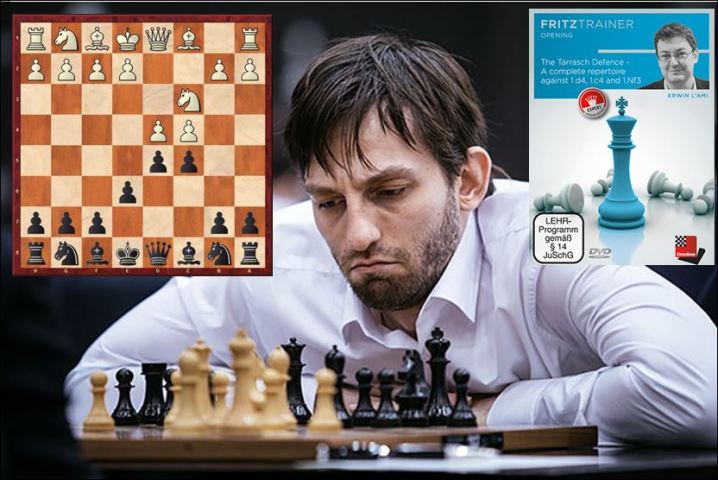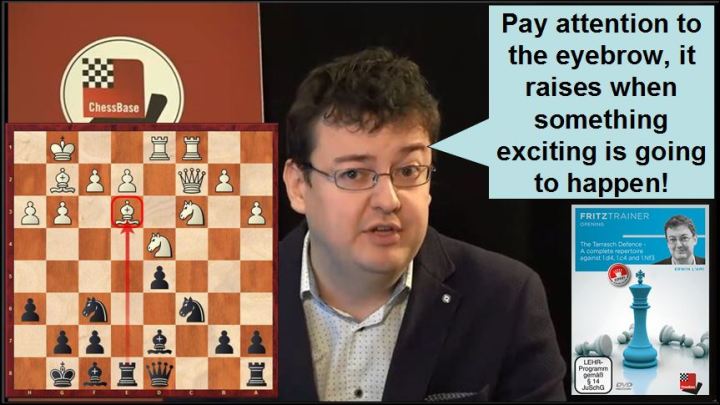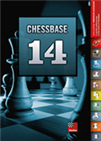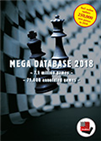Activity beats structure?
The Tarrasch Defence has a long history. For many of the best players in the world, it played a big role at one time or another.
L'Ami mentions that Kasparov used the Tarrasch Defence successfully in his match against Smyslov, and less successfully against Karpov...
The Tarrasch Defence starts with the moves 1.d4 d5 2.c4 e6 3.Nc3 c5 and Black immediately challenges White's centre:
Kasparov used this setup in games 4 and 12 of his match against Smyslov. For Garry, this was an important milestone — winning the match allowed him to become Karpov's challenger in a fight for the world crown.
Are there other champions who used the Tarrasch Defence successfully? Yes, Spassky, Keres and Gligoric are just a few of the names which come to mind. Here we included one game from each of them, so you can have an idea of what you can accomplish with the Tarrasch.
In more recent times, Grischuk is an exponent of the Tarrasch Defence.

And now let's finally get to the review of the DVD!
L'Ami notices that Rubinstein — in the beginning of the previous century — was the one who found the most effective setup to fight the Tarrasch. Rubinstein's idea was to push the g-pawn to g3 and develop the bishop to g2. This variation follows the moves 1. d4 d5 2.c4 e6 3.Nc3 c5 4.cxd5 exd5 5. Nf3 Nc6 6. g3 Nf6 7.Bg2 Be7 8. 0-0 0-0. L'Ami also mentions this as the first position of the Tarrasch.
L'Ami explains well the pros and cons of the Isolated Queen Pawn (IQP from now on), which can happen in the Tarrasch Defence.

L'Ami brings up that, while he was researching the material for the DVD, he got passionate about the opening and played a couple of games, which he drew. I found them for those as curious as me:
L'Ami has more experience in playing against the Tarrasch, since he is a 1.d4 player, which is good, because we want a teacher who knows and points out weak points of the opening we are going to learn.
L'Ami has made a great job in dividing the material. He began the DVD with a strategy section, which outlines the ideas and motifs behind the Tarrasch Defence. This allow us to play the opening without memorising the theory — if we know the changes of pawn structures or when to play the right exchange, then we know what move to play in each situation.
The themes of the strategic section are as follows:
- The right exchange
- Structure vs Activity
- Changing the pawn structure
- The squeeze
- The exchange sacrifice on e3
Upon the last topic, The exchange sacrifice on e3, I'd like to spend a few words. Some players believe it is a waste of time to study openings, but here we have a world-class teacher, who leads us from the opening into the middlegame, showing how we should think and why. This holistic teaching method cannot be done with books because in a book we often don't know when we need to pay attention. Instead, through L'Ami's tone of voice and body language, we become more involved in learning these fundamental concepts.

 Follow the World Champion and your chess friend next door. Start your success story with ChessBase 14 and enjoy your chess even more! In addition to the ChessBase 14 Program, the Premium Package contains:
Follow the World Champion and your chess friend next door. Start your success story with ChessBase 14 and enjoy your chess even more! In addition to the ChessBase 14 Program, the Premium Package contains:
• Access to the Live-Database (8 million games)*
• Mega Database 2018
• ChessBase Magazine subscription for a full year (6 issues)
• Database-Update-Service through end of 2018
• Full year Premium membership for playchess and for the ChessBase Accounts
• Corr Database 2018
• Endgameturbo 4The DVD continues with over 5 hours of theory! Yeah, you understood me well. In 5 hours, L'Ami explores systematically a very complex opening, which has been used a lot in the last hundred years, detailing move orders, evaluations and games that are important to remember. The guidance will be very useful when we find ourselves playing this opening in tournaments.
After the theory, there is a chapter with five videos where five games are deeply annotated. If one doesn't care to learn the Tarrasch for playing in tournaments, one should just watch these videos, as they are eye-opening for the big number of manoeuvres, tactical ideas and endgame skills shown. Yes, these five games explained by L'Ami are worth the price of the DVD, in my opinion. The way I used them is the following: I got the pgn of the five games, stripped of comments, and made my own annotations — then, I followed the videos with L'Ami teachings and found out what I had missed. This way, I replayed the games at least two times, so they will be better saved in my memory when the moment to use the knowledge will be needed.
Then, there is over one hour of interactive tests, in which L'Ami presents a position and we must step in and find the right move. This type of training is amazing, as L'Ami gives feedback when needed, helping clarify some ideas one might have believed to have understood, despite the fact they were not grasped correctly.
The DVD comes with a database of 50 selected games by the major exponents of the Tarrasch. Many of the games were played by Kasparov with Black.
Before concluding the review, I'd like to leave the reader with some position to work upon. I'd love the reviews to be a learning moment for everyone. While writing it, I had the chance to watch a big number of games, and some definitely sparked my imagination. Thanks to Chessbase's innovative training tools, everyone can play the following positions against the engine.
This is a great game between Taimanov and Spassky from 1971. White just played 31.Bd3, closing the d-file and preventing Black from playing Rd2. What would you play as Black?
This position comes from Marshall vs. Rubinstein and was played in 1907. When one wants to learn a new opening, particular attention should be given to the right timing of pawn pushes. We are at move 11 and Black must decide what to do. He could defend the d5-pawn or push it. What would you play? This type of exercise is more interesting than just solving tactics, because it's similar to what we are likely to find in a real game — it's also a choice that might have long-term consequences in the middlegame.
For those interested in the entire game, it is available in the the Mega Database 2018.
 The "Mega" is the database every serious chessplayer needs. The database contains 7.1 million games from 1500 to 2017, in highest quality standard, full of top level analyses and completely classified.
The "Mega" is the database every serious chessplayer needs. The database contains 7.1 million games from 1500 to 2017, in highest quality standard, full of top level analyses and completely classified.
A game from 1919, part of a match played between Euwe and Kroone in Amsterdam — they played many matches. Here, the future World Champion lost in just 28 moves. Notice the power of the Megabase 2018, and how easy it is to find interesting positions to study in order to learn the opening.
Once again you are Black and need to decide what to play. White just played 19.Rc4. What would you do?
And let's finish with some excitement!
This comes from the game Mohota vs. Gunina, 2008. White has just played 21.h4. What would you play as Black?
Final thoughts: As we have seen in the many games presented in this review, the Tarrasch is a must-learn opening, as it can bring our opponents out of their theoretical preparation, especially when they play 1.Nf3 or 1.c4.
Openings like the Tarrasch Defence are formative bones for each chess player's skeleton. They teach us about pawn structures — like the way to fight against or with the IQP — or when it's correct to release the central tension. All these typical elements can only be learned through classical openings like the Tarrasch Defence.
I loved the idea of active pieces, especially in the middlegame. This particular trait of the Tarrasch appeals to my chess player personality. I like an opening where I have space and active pieces, and where I can put continuous pressure over the enemy.
Last but not least, even if you don't plan to play the Tarrasch, get the DVD, as L'Ami is a top class teacher, and it is clearly worthy to spend a few hours with him. I cannot imagine who wouldn't improve from listening to L'Ami's wise explanations.
Links























